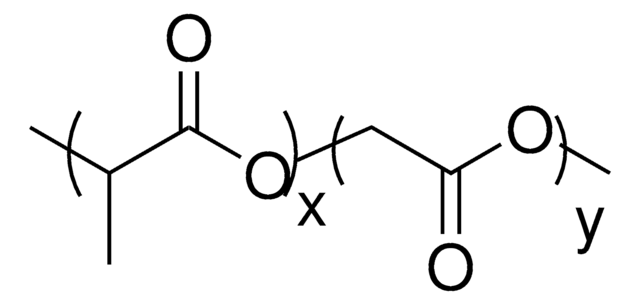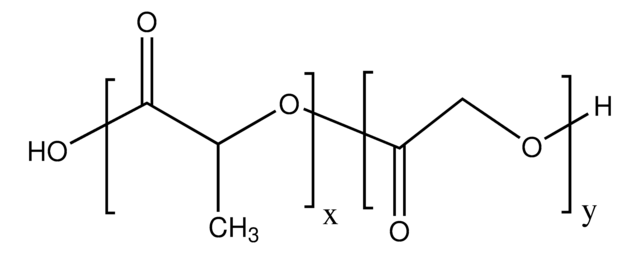908630
Poly(lactide-co-glycolide)-Flamma Fluor near-IR
lactide:glycolide (50:50), Mn 20,000-30,000
Synonyme(s) :
PLGA near IR, PLGA-FPI749, near IR conjugated PLGA
About This Item
Produits recommandés
Forme
powder or chunks
Ratio alimentaire
lactide:glycolide (50:50)
Poids mol.
Mn 20,000-30,000
average Mn 20,000-30,000
Composition
Dye Content, 7.54 μg/mg (polymer)
Couleur
blue to teal
Température de stockage
−20°C
Application
Code de la classe de stockage
11 - Combustible Solids
Classe de danger pour l'eau (WGK)
WGK 3
Point d'éclair (°F)
Not applicable
Point d'éclair (°C)
Not applicable
Faites votre choix parmi les versions les plus récentes :
Certificats d'analyse (COA)
It looks like we've run into a problem, but you can still download Certificates of Analysis from our Documents section.
Si vous avez besoin d'assistance, veuillez contacter Service Clients
Déjà en possession de ce produit ?
Retrouvez la documentation relative aux produits que vous avez récemment achetés dans la Bibliothèque de documents.
Notre équipe de scientifiques dispose d'une expérience dans tous les secteurs de la recherche, notamment en sciences de la vie, science des matériaux, synthèse chimique, chromatographie, analyse et dans de nombreux autres domaines..
Contacter notre Service technique






